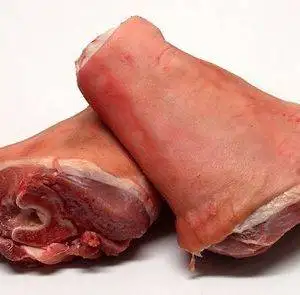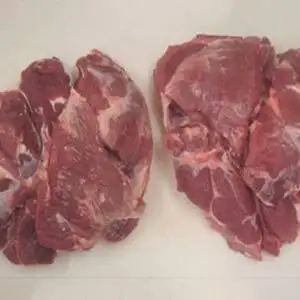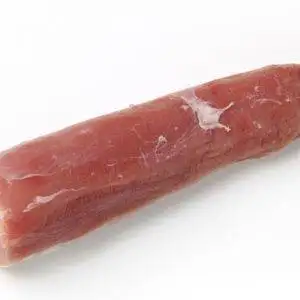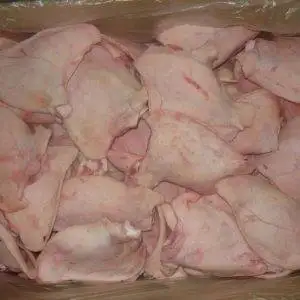Description
Frozen Pork Knuckles Whole: A Complete Guide to Nutrition, Cooking, and Culinary Traditions
Introduction
Frozen pork knuckles whole are a versatile and flavorful cut of meat enjoyed in cuisines across the globe. Known for their rich taste, gelatinous texture, and culinary adaptability, pork knuckles (also called pig hocks) are a favorite in traditional recipes from Germany to China. Whether slow-braised in soy sauce, roasted until crispy, or boiled in soups, this humble cut transforms into a gourmet dish when cooked properly.
In this comprehensive guide, we’ll dive deep into everything you need to know about https://copacolc.com/frozen pork knuckles whole—from nutritional value and cooking techniques to buying tips and cultural significance. If you’re a home cook, food enthusiast, or restaurant buyer, this article will help you understand why pork knuckles deserve a spot in your kitchen or business.
What Are Frozen Pork Knuckles Whole?
Pork knuckles, also known as pig hocks or pork hocks, are the lower part of the pig’s leg, located just above the feet and below the ham. Unlike ham or pork shoulder, knuckles are tougher and contain a higher ratio of connective tissue, skin, and bone. This makes them ideal for slow cooking, which breaks down collagen into gelatin, resulting in tender, flavorful meat.
When sold as frozen pork knuckles whole, the cut is preserved at peak freshness, extending shelf life and making it convenient for storage, transportation, and bulk purchasing.
Nutritional Value of Pork Knuckles
Pork knuckles are not only delicious but also rich in nutrients. A typical serving provides:
-
Protein: Essential for muscle growth and repair.
-
Collagen & Gelatin: Supports skin, joints, and gut health.
-
Vitamins: B1 (thiamine), B6, B12, and niacin for energy metabolism.
-
Minerals: Iron, zinc, and phosphorus for blood health and immunity.
-
Fat Content: Higher than lean cuts, but mostly from the skin and marrow.
While pork knuckles can be fatty, their slow cooking process often allows excess fat to render out, leaving behind deeply flavored meat.
Culinary Uses Around the World
Frozen pork knuckles whole are prized in many culinary traditions:
-
Germany: Known as Schweinshaxe, crispy roasted pork knuckle is a Bavarian classic served with sauerkraut and potatoes.
-
China: Braised pork knuckles with soy sauce, ginger, and star anise are popular for festive meals.
-
Philippines: Crispy Pata—deep-fried pork knuckle—is a beloved celebratory dish.
-
Eastern Europe: Pork knuckles are slow-braised with cabbage, beans, or in hearty stews.
-
Latin America: Used in soups and stews, adding rich gelatinous texture.
How to Cook Frozen Pork Knuckles
Cooking frozen pork knuckles requires patience but rewards you with tender, flavorful results. Here are some popular methods:
1. Boiling
Perfect for soups and broths. Simply simmer knuckles with aromatics (onion, garlic, peppercorns) for 2–3 hours until tender.
2. Roasting
A German favorite, roasting produces crispy skin and juicy meat. After boiling, bake in the oven at high heat until the skin blisters.
3. Braising
Slow-cook knuckles in soy sauce, beer, or stock with herbs and spices. The collagen-rich cut becomes melt-in-your-mouth tender.
4. Smoking
Smoked pork knuckles are savory and aromatic, excellent for hearty winter meals.
Popular Recipes with Pork Knuckles
-
German Schweinshaxe – Roasted knuckle with crispy skin.
-
Chinese Soy-Braised Pork Knuckles – Slow-cooked with ginger, garlic, and star anise.
-
Filipino Crispy Pata – Deep-fried pork knuckle served with vinegar dipping sauce.
-
Eastern European Pork Knuckle Stew – Braised with cabbage, potatoes, and paprika.
-
Pork Knuckle Soup – Light broth with vegetables, popular in Asia.
Buying Guide – Where to Source Quality Frozen Pork Knuckles
When purchasing frozen pork knuckles whole, consider:
-
Supplier Reputation: Buy from trusted butchers, wholesalers, or supermarkets.
-
Certification: Look for USDA, HACCP, or EU quality assurance.
-
Packaging: Vacuum-sealed packaging retains freshness.
-
Origin: Some regions (like Germany and Denmark) are renowned for high-quality pork.
For restaurants and retailers, bulk suppliers often provide frozen knuckles at competitive prices.
Storage and Handling Tips
-
Keep pork knuckles frozen at -18°C (0°F) or lower.
-
Defrost in the refrigerator for 24–48 hours before cooking.
-
Do not refreeze after thawing.
-
Use within 3–5 days once thawed.
Health Benefits & Considerations
-
Collagen Support: Promotes joint and skin health.
-
Bone Broth Benefits: Excellent for gut health when simmered into soups.
-
High-Calorie Cut: Moderation is key for weight management.
-
Sodium: Processed pork knuckles (smoked or cured) may contain added salt.
Frozen Pork Knuckles in Traditional Cuisine
-
Germany: Oktoberfest wouldn’t be complete without roasted pork knuckles and beer.
-
China: Symbol of prosperity, often served during Lunar New Year.
-
Philippines: A festive dish for birthdays and holidays.
-
Czech Republic & Poland: Pork knuckles are staples in traditional tavern food.
Pairing Pork Knuckles with Side Dishes
Best sides to serve with pork knuckles include:
-
Sauerkraut and mashed potatoes
-
Pickled vegetables
-
Garlic fried rice (Filipino style)
-
Dumplings and cabbage
-
Beer or rice wine as beverages
Why Choose Frozen Over Fresh?
-
Longer Shelf Life: Can be stored for months without spoilage.
-
Convenience: Always available, regardless of season.
-
Cost-Effective: Bulk frozen purchases are cheaper for restaurants.
-
Preservation of Nutrients: Freezing locks in freshness.
Tips for Businesses (Restaurants, Retailers, Exporters)
-
Offer variety: fresh, frozen, smoked options.
-
Highlight cultural recipes to attract diverse customers.
-
Maintain proper cold chain logistics to preserve quality.
-
Use SEO-friendly marketing terms like “buy frozen pork knuckles wholesale.”
Sustainability & Ethical Sourcing of Frozen Pork Knuckles Whole
With growing consumer awareness, sourcing ethically raised pork is crucial. Look for suppliers that practice:
-
Free-range or humane farming.
-
Environmentally sustainable operations.
-
Certifications such as Organic, Animal Welfare Approved, or GlobalG.A.P.
Frequently Asked Questions (FAQs) Frozen Pork Knuckles Whole
1. What’s the difference between pork knuckles and ham hocks?
They are similar cuts, but knuckles are meatier and located slightly higher on the leg.
2. Can frozen pork knuckles be cooked without thawing?
Yes, but thawing first ensures even cooking and better flavor absorption.
3. Are pork knuckles healthy?
Yes, in moderation—they provide protein, collagen, and minerals.
4. How long do frozen pork knuckles last?
Up to 12 months if stored at -18°C or below.
5. What is the best way to get crispy skin?
Boil first, then roast at high heat for maximum crispiness.
Conclusion
Frozen pork knuckles whole are a culinary treasure, beloved for their versatility, flavor, and cultural significance. Whether you’re preparing a Bavarian Schweinshaxe, Filipino Crispy Pata, or a comforting Chinese braise, this cut transforms into a rich and hearty dish when cooked with care.
For home cooks, it’s an opportunity to explore new flavors. For restaurants and retailers, it’s a cost-effective product with strong demand across global cuisines. With proper sourcing, storage, and cooking, frozen pork knuckles can bring both tradition and innovation to your dining table.






Reviews
There are no reviews yet.